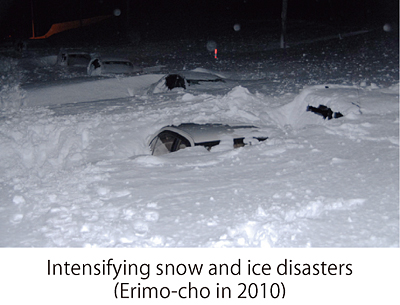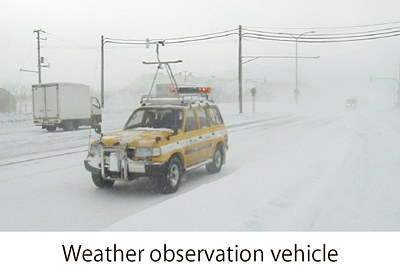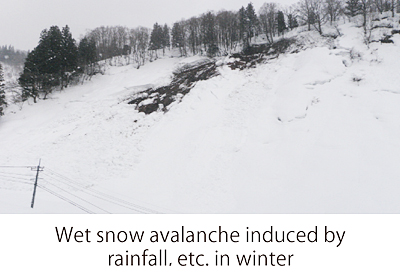Snow and Ice Research Team
In recent years, extraordinarily intense localized snowfall, storms and abnormally high temperatures in winter cause snow and ice disasters increasing serious and diverse. To contribute to long-term plans for snow control and design of snow countermeasure facilities, this study analyzes the trends in the change of winter climates and prepares distribution maps of winter climates in the future.

Frequent blowing snow disasters occur: for example, multi-vehicle accidents in whiteouts caused by blowing snow or vehicle traffic brought to a standstill by snow drift. In order to prevent or mitigate blowing/drifting snow disasters, this team in carrying out research on technologies to predict reduced visibility, and on blowing snow risk evaluation method along an entire route based on continuous weather data collected by a weather observation vehicle during snowstorm.

It is feared that rainfall and high temperatures during the winter will change snow characteristics, including water content and arise the increasing frequency of wet snow avalanche disasters. In order to prevent or mitigate disasters caused by wet snow avalanches, research on technologies to evaluate the risk of wet snow avalanches is being carried out.

